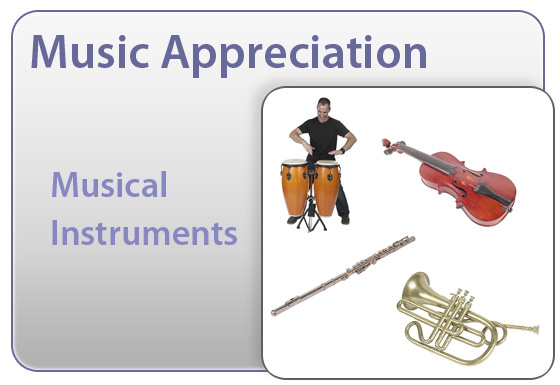
Musical instruments have a long and rich history and have become an integral part of modern music making. It is common to study musical instruments by families. Each of the families has something in common. It may be the material they are made of. It may be the way in which they are constructed or even how they make sound.
Every musical instrument has a unique sound. This is called musical timbre (pronounced tam-ber). Trumpets have a different timbre than clarinets or pianos. The special sound that each instrument makes is a result of the acoustic properties of that particular instrument.
Within the families of instruments it is helpful to think about the voices as if they were vocals. Each family will have members that would parallel a soprano voice, an alto voice, a tenor voice, and a bass voice. In music that is written for instruments these voicings are very important since it allows the composer to spread out the notes across a wide range.
Images of each instrument will be provided along with the range of the instrument given in terms of the notes on a piano. An audio sample of the sound of the instrument will be included in the content of each section.
In addition, some attention will be given as to how the instrument actually makes a sound, how the notes can be made higher or lower, and what kind of music might be played by the instrument.